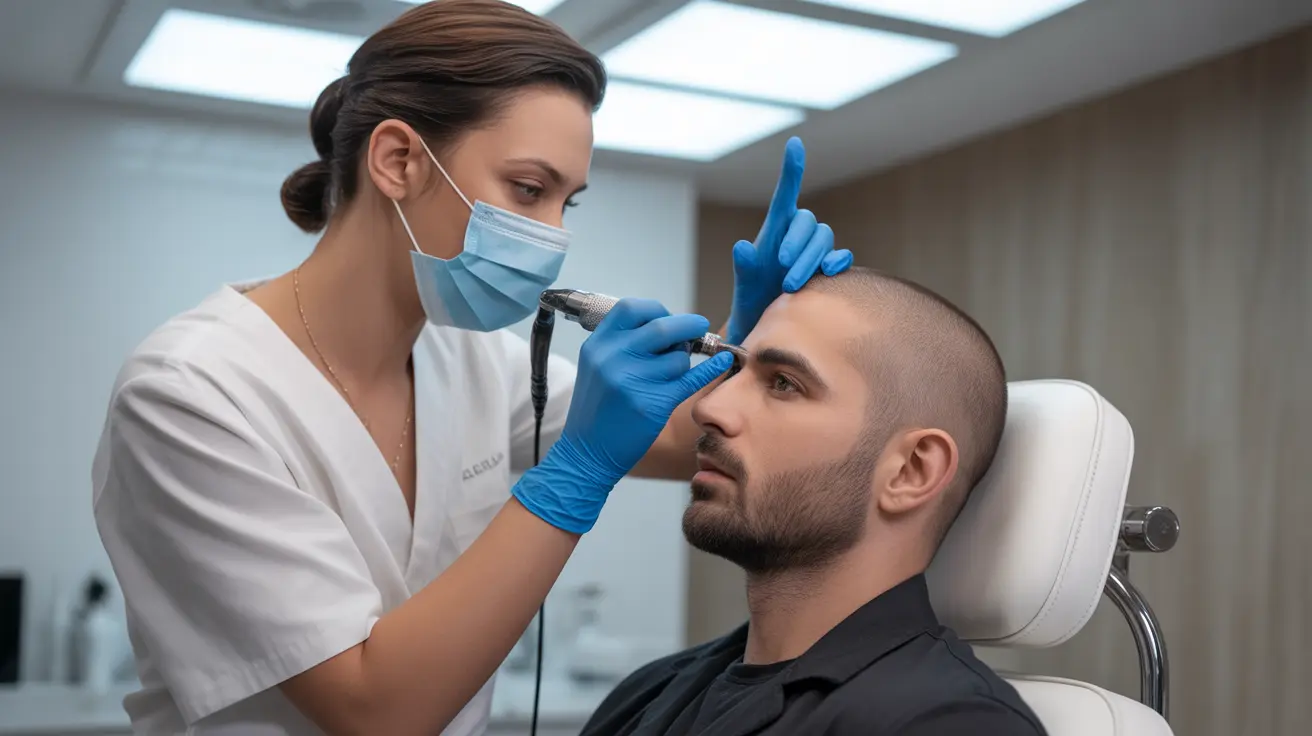For those struggling with hair loss or thinning hair, scalp micropigmentation (SMP) offers a innovative, non-surgical solution that can restore the appearance of a fuller head of hair. This advanced cosmetic procedure involves depositing specialized pigments into the scalp to create the illusion of hair follicles, resulting in a natural-looking buzz cut or denser appearance for existing hair.
Whether you're considering SMP to address pattern baldness, cover surgical scars, or enhance the appearance of thinning hair, understanding the procedure, its benefits, and what to expect is crucial for making an informed decision.
Understanding Scalp Micropigmentation
Scalp micropigmentation is a specialized form of cosmetic tattooing that uses micro-needles to place tiny dots of pigment in the dermal layer of the scalp. Unlike traditional tattoos, SMP requires specific techniques and pigments designed to match your natural hair color and create the appearance of natural hair follicles.
How the Procedure Works
During an SMP session, a trained technician uses a specialized device to deposit medical-grade pigments at a specific depth in the scalp. The process requires precision and artistic skill to ensure the dots are placed in a pattern that mimics natural hair growth and density.
The Treatment Process
Most clients require multiple sessions, typically spread over 2-4 weeks, to achieve optimal results. Each session builds upon the previous one, allowing for gradual development of density and ensuring the most natural-looking outcome.
Benefits of Scalp Micropigmentation
SMP offers several advantages for those dealing with hair loss:
- Immediate results with minimal downtime
- Non-surgical solution requiring no ongoing maintenance
- Cost-effective compared to hair transplants
- Suitable for all skin types and most hair loss patterns
- Can camouflage scars and previous hair transplant procedures
Preparation and Recovery
Before undergoing SMP, clients should avoid excessive sun exposure and keep their scalp clean and free from oils. After the procedure, specific aftercare guidelines help ensure optimal results and longevity of the treatment.
Essential Aftercare Steps
Following treatment, patients should:
- Avoid washing the treated area for 4-5 days
- Protect the scalp from direct sunlight
- Avoid swimming and excessive sweating for at least 10 days
- Keep the scalp moisturized according to practitioner recommendations
Long-Term Results and Maintenance
While scalp micropigmentation is considered a semi-permanent solution, the results can last many years with proper care. Some clients may require occasional touch-ups to maintain the desired look, typically every 4-6 years depending on various factors including sun exposure and skincare routine.
Frequently Asked Questions
What are the benefits and risks of scalp micropigmentation for hair loss?
Benefits include immediate results, low maintenance, and natural-looking outcomes. Risks may include potential allergic reactions to pigments, infection if proper sterile procedures aren't followed, and unsatisfactory results if performed by an inexperienced practitioner.
How many sessions are typically required for effective scalp micropigmentation results?
Most clients need 2-4 sessions, spaced 7-14 days apart, to achieve optimal results. The exact number depends on the extent of the area being treated and the desired density.
What kind of aftercare is necessary following a scalp micropigmentation procedure?
Aftercare includes avoiding water contact for 4-5 days, protecting the scalp from sun exposure, avoiding swimming and heavy sweating for 10 days, and following specific moisturizing instructions provided by your practitioner.
Is scalp micropigmentation suitable for hiding scars from previous hair transplants or surgeries?
Yes, SMP is highly effective for camouflaging scars from hair transplants, injuries, or surgical procedures. The technique can be adjusted to match the surrounding skin tone and create the appearance of hair follicles within the scarred area.
How long does scalp micropigmentation typically last, and are touch-ups needed?
SMP results can last 4-6 years or longer with proper care. Touch-ups may be needed every few years to maintain color vibrancy and density, depending on factors like sun exposure, skincare routine, and individual healing characteristics.




